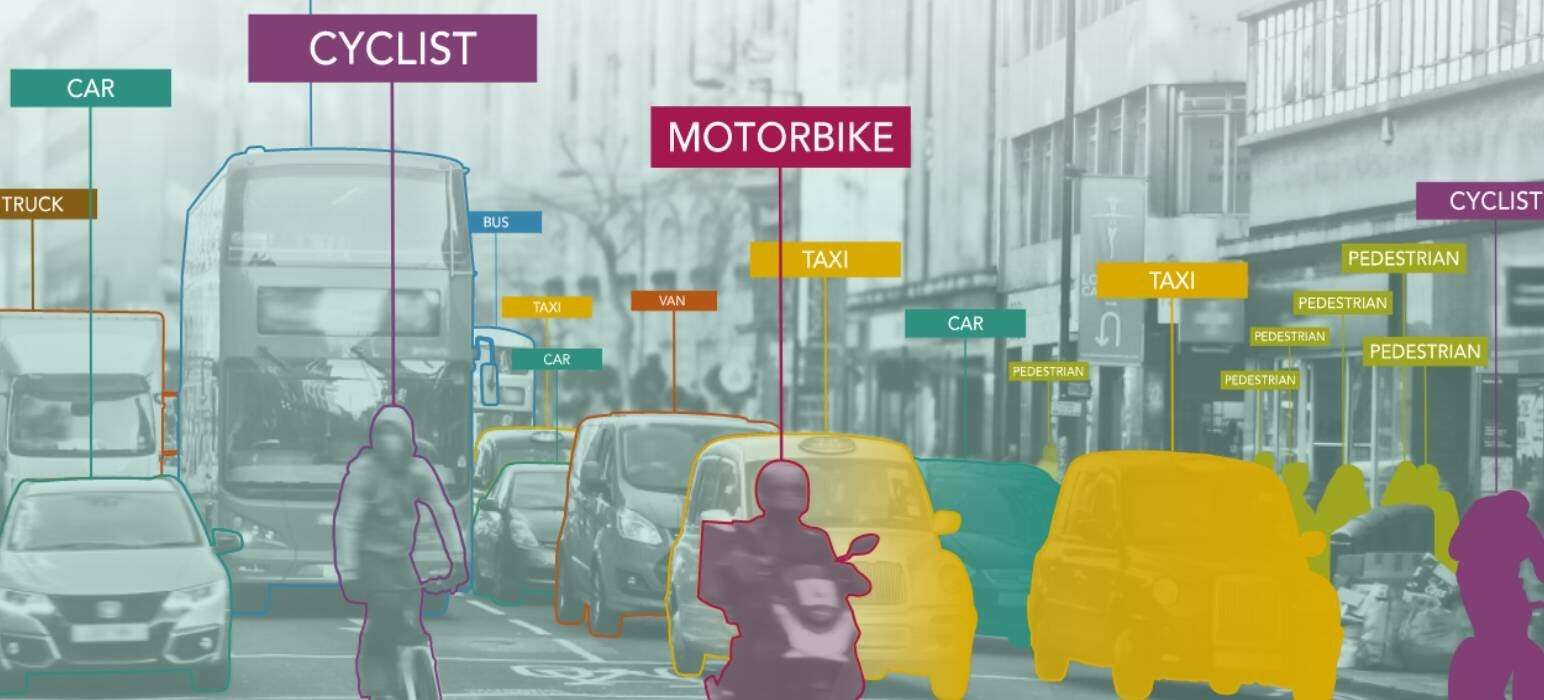
Air pollution is generally assessed by clouds of exhaust engine smoke or levels of pollutants, such as nitrogen dioxide, in the air. But there is another key metric by which we can measure its extent: time. Road congestion and standstill traffic have been shown to increase vehicle emissions and degrade air quality significantly. In Greater London alone it is estimated there were approximately 4,000 deaths attributed to air pollution in 2019, with traffic being the prime culprit.
One firm looking to tackle pollution through traffic management is London-based Vivacity Labs. It is one of many start-ups using smart tech to address congestion, alongside companies such as Canada-based Miovision and Israel-based Waycare. It works with local authorities to incorporate artificial intelligence (AI) into road infrastructure to improve traffic flow and reduce emissions caused by standstill and crawling traffic.
The company’s core product is its smart video sensors, which collect millions of pieces of anonymised data, such as model, frequency and speed of vehicles, to assess flow and develop algorithms that can predict future traffic patterns.
This information can help policymakers and urban planners make decisions that address safety weaknesses, congestion or pollution; for instance, by improving a road that is dangerous for cyclists, making traffic adjustments for lorries – which typically have higher emissions than cars – or increasing rates of active travel.
As an example, Vivacity Labs worked with Westminster City Council in 2020, using sensors to analyse pedestrian behaviour and assess whether increasing footpath space would encourage more people to walk. Two months after footpaths were expanded, a 25% increase in pedestrians was calculated.
“Our sensor data can help councils measure the impact of their interventions and address any unforeseen issues,” says Raquel Velasco, head of product at Vivacity Labs. “For instance, they can see whether a new cycle lane impacts the flow of traffic or whether cyclists are actually using the lane or not.”
***
A more recent advancement is the company’s smart junctions, which act as autonomous traffic lights – these analyse data collected by the sensors and learn from the patterns to control traffic flow themselves, a technique known as “reinforcement learning”.
“During the pandemic, there’s been a shift in priority for pedestrians and cyclists who have not traditionally been taken into account in traffic signal control,” says Velasco. “The junctions can prioritise different modes of transport and optimise for movement of people, as well as cars.”
The AI-powered junctions are programmed to act on a particular aim. In what Velasco describes as a “policy-driven algorithm”, policymakers can set a priority, whether that be reducing waiting time for pedestrians or speeding up car flow, and the tech commits it to memory.
While it might seem intuitive to prioritise pedestrians and cyclists, this is not necessarily the case – there is a delicate balancing act to be made, complicated by the fact that emissions vary depending on the vehicle, speed and other factors.
“Reducing the time that pedestrians have to wait sounds great but the impact is congestion and therefore emissions from idle traffic,” Velasco says. “You can set the algorithm to optimise to reduce emissions as well, to try to balance it out.”
Many of Vivacity Labs’ clients are local authorities, with whom the company has a symbiotic relationship – often funded through innovation programmes, authorities receive access to the tech while their findings provide valuable research on how Vivacity Labs’ products work in real-world environments.
One project nearing its end is a three-year Innovate UK initiative where the company’s smart junctions were introduced across 12 junctions in Greater Manchester. Evaluation is ongoing but the intervention is showing positive signs of decreasing journey times across the city.
Working with public sector bodies comes with its challenges, particularly around securing ongoing funding. Council budgets are often decided year-by-year, making commitments for long-term projects difficult, says Velasco.
The company has had to adapt its client management, where the norm is to sell subscription services.
“The public sector is strapped for cash, so as a private company, guaranteeing ongoing revenue is not always possible,” she says. “It’s not an insurmountable challenge, but it’s a very different way of doing business.”
A pertinent question around embedding video technology into road infrastructure is around data privacy – where does all this footage go once it’s been captured? In Vivacity Labs’ case, it gets deleted, according to Velasco. The sensors themselves contain a computer that processes and encrypts the data. The findings are anonymised and aggregated into trends, which are sent to dashboards for the Vivacity Labs team to present to clients.
The main hurdle is therefore not around security, but the disconnect between data and the skills required to interpret it. Vivacity Labs includes analysis as part of its service, but the long-term aim is to empower councils to interpret the findings themselves and make independent decisions.
The company regularly runs educational workshops, but Velasco feels there needs to be a long-term strategy to instil “data-driven decision-making” into the transport sector. Vivacity Labs has met with the Department for Transport and combined authorities to discuss this.
International expansion is on the agenda for Vivacity Labs, including negotiating how the tech will integrate with different traffic control systems across the world. The company will also explore self-driving vehicles, as it navigates how dual systems of autonomy could work together. But ultimately, while AI can help to innovate city planning, its potential can only be fully realised if the workforce is upskilled. “There’s so much information out there and unlocking it needs specialist knowledge,” Velasco says. “We need to drive data analysis within the public sector.”
This article originally appeared on NewStatesman.com.






